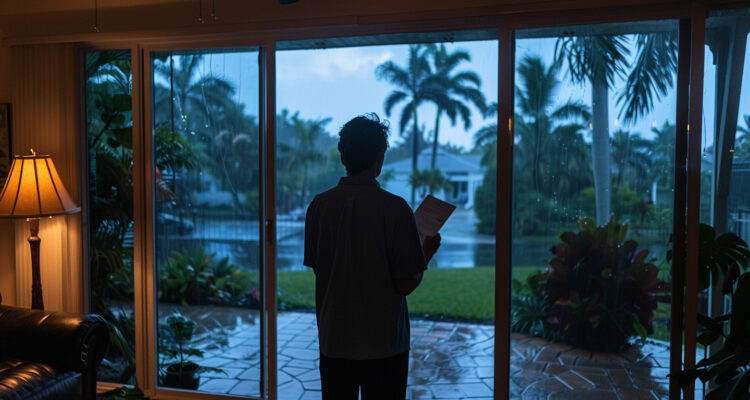When hurricane season approaches in Florida, preparation is more than peace of mind—it’s a necessity. Whether you’re new to the state or a seasoned local, having a reliable hurricane supply list helps ensure your home and family are ready for anything. At Armor Screen, we’ve protected Florida homes from the strongest Category 5 storms for over two decades. This guide will walk you through the must-haves, offer expert insights, and link to a helpful hurricane prep checklist reference sheet you can print and use at home.
The Three-Part Supply Strategy Every Floridian Needs
The most effective hurricane prep isn’t just about bottled water and flashlights—it’s about preparing thoughtfully in three critical areas: power outages, home protection, and evacuation readiness. When each of these zones is covered, your chances of riding out a storm safely and with less stress dramatically improve.
Power Outage Prep: Stay Safe, Lit, and Informed
Hurricanes often knock out power for hours—or even days, leaving Florida households without refrigeration, communication, or cooling when it’s needed most. As part of any well-prepared hurricane supply list, it’s critical to include items that help you navigate extended blackouts safely. That means more than flashlights — you’ll need backup power sources, reliable lighting, ways to keep food safe, and tools to stay informed when digital access disappears.
- Manual can opener – Most canned goods are lifesavers during outages, but without electricity, your electric opener is useless. A manual version ensures access to food when you need it most.
- Fuel reserves (gasoline/propane) – Whether you’re powering a grill, generator, or portable stove, having extra fuel—stored safely and legally—is essential. Be sure to fill gas cans well in advance and store them away from living areas.
- Generator (with CO monitor & safety guide) – A backup generator can power refrigerators, fans, or medical equipment. Always operate it outdoors and use a carbon monoxide detector nearby to protect against toxic gas buildup.
- LED lanterns & battery-powered lighting – LEDs last longer and pose less fire risk than candles. Stock up on lanterns for bedrooms and bathrooms and flashlights for each person.
- Battery packs & car chargers – Keep your phones and emergency radios charged. Portable battery packs are essential when cellular service is up but outlets are down.
- Surge protectors – Protect TVs, computers, and other electronics from sudden post-outage surges that could fry your devices.
- Board games, books, cards – These low-tech options are a sanity-saver for long nights. They also help reduce anxiety, especially for children.
- Frozen water bottles – These keep your freezer cold longer during a blackout and become drinkable water as they thaw.
- Cooler with ice packs – When the fridge warms up, you’ll need a cold place to store medications, baby formula, or perishable food.
- Extra batteries – Don’t assume what you have on hand will last. Stock multiple sizes, especially AA, AAA, D, and 9V for flashlights and radios.
- Hand-crank or solar-powered radio – When cell towers fail, emergency alerts and weather updates are still accessible via NOAA radio. Crank models never run out of juice.
Home Protection Prep: Defend What Matters Most
Protecting your home is about more than materials—it’s about creating a buffer between your family and the forces of nature. These tasks should be done 48–24 hours before landfall (which is when the eye of the storm crosses the coastline from sea to land):
- Secure outdoor items – Even lightweight objects like trash cans, patio cushions, or potted plants can become dangerous projectiles in high winds. Store or anchor everything.
- Trim trees & remove dead branches – Falling limbs cause widespread damage during hurricanes. Pre-storm trimming helps protect your roof, windows, and vehicles.
- Clear gutters & downspouts – Blocked gutters lead to roof leaks and structural damage. Clean them out early to ensure rainwater flows away from your home.
- Reinforce garage doors – Many homes are breached when garage doors collapse. Use braces or retrofit kits if your model isn’t storm-rated.
- Unplug electronics – Avoid damage from power surges by unplugging computers, appliances, and entertainment systems before the storm arrives.
- Move valuables to upper levels – Protect family heirlooms, documents, and irreplaceable items from potential flooding by storing them off the ground.
- Pre-freeze water bottles – This expands your emergency water supply and helps keep food cold longer if power fails.
- Charge all devices – Fully charge phones, tablets, laptops, radios, and power banks the day before landfall.
- Set fridge/freezer to coldest setting – The colder your appliance starts, the longer it’ll stay below food safety thresholds during an outage.
- Move cars away from trees & fill the gas tank – A full tank ensures you’re ready to evacuate if needed. Park in a garage or away from overhanging limbs.
- Shut off propane or gas (if advised) – Local authorities may recommend shutting off utilities to prevent leaks or explosions. Know how to do it safely.
Evacuation Go-Bag: Grab-and-Go Readiness
Sometimes, staying home simply isn’t safe. Whether due to rising floodwaters, evacuation orders, or compromised infrastructure, you may have to leave quickly—often with little warning. That’s why a well-prepared hurricane supply list must include a ready-to-go evacuation bag for each household member.
A go-bag isn’t just a backpack of basics; it’s a personalized survival kit designed to support you for several days away from home. From medications and identification to clothing, hygiene essentials, and comfort items, having these items packed ahead of time helps reduce stress and ensures your family has what it needs—no matter where the storm takes you:
- 3–5 days of clothing – Pack lightweight, breathable clothes suited to Florida’s warm, humid climate, plus a rain poncho or light jacket.
- Toiletries & hygiene items – Travel-size items save space. Include toothbrush, toothpaste, deodorant, sanitary products, and shampoo.
- Cell phone & charger – Don’t forget the cord and a backup power bank to keep communications open.
- Flashlight & spare batteries – Even if you’re staying at a shelter, it’s smart to have your own reliable light source.
- Medications & medical list – Include all daily prescriptions, over-the-counter meds, and a list of allergies or conditions in case you need care.
- Non-perishable snacks – Protein bars, trail mix, and peanut butter keep energy up without refrigeration.
- Cash in small bills – Credit card systems may go down. Small denominations are easier for emergency purchases.
- Photo ID, insurance copies, emergency contacts – Store in a waterproof bag or folder, including home and health insurance info.
- First-aid kit – Stock it with bandages, antiseptics, tweezers, gloves, and pain relievers.
- Blanket or sleeping bag – Shelters often run low on bedding. Bring something clean and portable for comfort.
- Bottled water – Minimum of one gallon per person per day for at least three days.
- Baby & pet supplies – Diapers, wipes, bottles, pet food, leashes, and travel crates as needed.
- Hand sanitizer & wipes – Critical for staying clean in high-traffic shelter environments.
- Map of evacuation routes – Don’t rely solely on GPS. Paper maps can help if roads close or service fails.
Family-Focused Tips for Calm in the Storm
- Preparation should reduce fear—not create it. These tips help Florida families approach storm readiness as a team:
- Create a “Hurricane Prep Day” tradition – Use the start of hurricane season (June 1) to stock supplies, test screens, and go over your checklist together.
- Assign age-appropriate roles – Kids can gather flashlights, pack games, or help secure the yard. Giving them responsibility builds confidence.
- Build a comfort kit – Favorite toys, snacks, a journal, or a family photo can ease anxiety in children during evacuations or long power outages.
- Talk about hurricanes calmly – Keep conversations simple and honest. Explain why you prepare and how everyone will stay safe.
- Plan for pets – Make sure every pet has an ID tag, emergency food, and a plan. Not all shelters accept animals, so research pet-friendly options now.
Beyond the Basics: Pro Tips for Florida Families
Floridians who’ve lived through multiple hurricane seasons understand that true preparedness goes beyond flashlights and bottled water. While a standard hurricane supply list covers the essentials, there are additional steps that can make a major difference in safety, recovery time, and peace of mind. These advanced tips are drawn from real-world experience and can help you avoid last-minute stress, reduce damage, and stay more resilient through and after the storm.
- Pre-schedule service appointments in spring – Tree trimming and Armor Screen inspections book fast once a storm is named. Get ahead of the rush.
- Label essential shut-offs and breakers – Use painter’s tape to identify power, gas, and water valves. In an emergency, every second counts.
- Assemble a “storm bin” – Keep gloves, tarps, duct tape, tools, and rope in a labeled, waterproof bin for quick access post-storm.
- Photograph everything – Take pictures or video of your home, furniture, and valuables for easier insurance claims if needed.
- Build a neighborhood network – Share contact info and storm plans with trusted neighbors. Support is everything during recovery.
Get Your Free Hurricane Prep Checklist Reference Sheet
Overwhelmed? We’ve got you covered. Download our hurricane prep checklist reference sheet for a quick-print version of everything you need to prepare before the next big storm. It’s a simple, stress-saving resource you can keep on the fridge or in your go-bag.
Why Trust Armor Screen?
Since 1998, Armor Screen has been a leading name in hurricane protection across Florida. Our systems are Miami-Dade and Florida Building Code approved, tested to endure winds up to 276 MPH, and built to preserve visibility and home aesthetics. From condos to historic estates and hospitals, Armor Screen products protect homes and lives with reliability and elegance.
Don’t Wait for the Warning—Start Today
Every year, hurricanes cause millions in damage—and much of it is preventable. With a complete hurricane supply list, thoughtful planning, and the proven power of Armor Screen, your family can face Florida’s toughest storms with confidence and calm.




